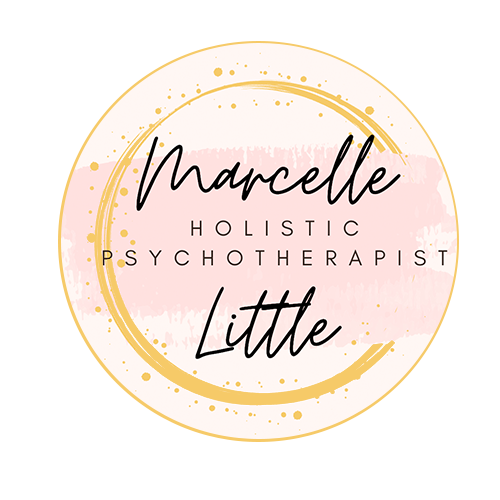7 Ways EMDR Can Help You Manage Anxiety in San Francisco and Los Angeles
Living in the fast-paced urban landscape of San Francisco or Los Angeles can often feel overwhelming, with anxiety becoming an all-too-common experience for many. Whether it’s the pressure of high-performance careers, social expectations, or past traumas that linger beneath the surface, managing anxiety can be challenging. Eye Movement Desensitization and Reprocessing (EMDR) therapy offers a structured and evidence-based approach to alleviating anxiety by addressing the root causes rather than just the symptoms.
As a psychotherapist specializing in trauma-informed care, I integrate EMDR therapy in my online practice to support individuals in California, including those in the San Francisco Bay Area and Los Angeles, who are looking to reclaim emotional balance and resilience. Here are seven ways EMDR can help you manage anxiety and cultivate a more empowered mindset.
1. Understanding EMDR Therapy and Its Neurological Impact
EMDR is a scientifically validated therapy designed to facilitate the reprocessing of distressing experiences through bilateral stimulation, such as guided eye movements. This technique is grounded in research on neuroplasticity, demonstrating how the brain can reorganize itself by forming new neural connections (Shapiro, 2001). By targeting maladaptive memories and beliefs stored in the brain, EMDR helps individuals reframe distressing experiences and reduce their emotional charge.
Through a structured eight-phase protocol, EMDR allows individuals to process traumatic memories in a controlled environment, shifting their cognitive and emotional response. This therapeutic approach is particularly beneficial in urban settings like San Francisco, where chronic stressors can amplify underlying anxiety patterns.
2. Processing Trauma That Fuels Anxiety
Unresolved trauma is one of the most significant contributors to chronic anxiety. Studies indicate that individuals with a history of trauma are more likely to develop generalized anxiety disorder (GAD) and panic disorders (van der Kolk, 2014). EMDR effectively targets these past experiences, allowing the brain to reprocess them in a way that reduces their emotional intensity.
For many, anxiety is not just about the present moment—it is a conditioned response to past events. Through EMDR, clients can unlock suppressed memories and restructure their emotional responses, leading to a profound decrease in anxiety levels and an increased sense of agency over their emotions.
3. Rewiring Negative Thought Patterns
One of the most transformative aspects of EMDR is its ability to disrupt negative cognitive patterns. Research suggests that anxiety is often perpetuated by automatic negative thoughts (Beck, 1976). These thoughts create a cycle of fear and avoidance, making it difficult for individuals to break free from anxious behaviors.
By targeting these distorted beliefs at their origin, EMDR helps reframe and replace them with adaptive perspectives. Over time, clients begin to notice a shift from fear-based thinking to more balanced and constructive cognition. This shift is particularly helpful for individuals navigating high-stress environments, where anxiety-driven thought loops can be detrimental to both personal and professional well-being.
4. Strengthening Emotional Regulation Skills
Emotional dysregulation is a common feature of anxiety disorders, making it difficult to manage stressors effectively. EMDR enhances an individual’s ability to self-regulate by integrating distressing experiences in a way that no longer triggers intense emotional responses. Neuroimaging studies show that EMDR can help regulate activity in the amygdala—the brain’s fear-processing center—leading to a more measured response to stress (Pagani et al., 2012).
For individuals living in fast-paced environments like San Francisco, this skill is invaluable. The ability to navigate high-pressure situations with greater emotional balance can lead to improved relationships, job performance, and overall well-being.
5. Cultivating Self-Compassion and Reducing Self-Criticism
Anxiety often coexists with self-criticism and perfectionism. Many individuals struggling with anxiety engage in negative self-talk, which reinforces feelings of inadequacy and distress. EMDR works by helping individuals uncover the root causes of these internalized beliefs and replace them with more self-compassionate narratives (Neff, 2011).
By fostering a sense of kindness toward oneself, EMDR therapy can significantly reduce the impact of anxiety. Clients begin to recognize that they are not defined by their past experiences, creating space for personal growth and healing.
6. Tailoring Therapy to Individual Needs
Anxiety is not a one-size-fits-all experience. While some individuals struggle with social anxiety, others may face work-related stress or generalized anxiety disorder. EMDR’s adaptability allows for personalized treatment plans tailored to each client’s unique history and triggers. This customized approach ensures that therapy aligns with the individual’s personal healing journey rather than imposing a rigid framework.
For San Francisco and Los Angeles residents seeking therapy, this flexibility is particularly beneficial, as it accommodates diverse experiences, backgrounds, and stressors unique to urban life.
7. Moving Forward with Greater Ease
Healing from anxiety is a journey, and EMDR offers a path to deeper understanding and relief. If anxiety has been holding you back, know that there are ways to gently reprocess the past and move toward a more balanced future. You don’t have to navigate this alone—support is available to help you step into greater emotional freedom at your own pace.
References
Beck, A. T. (1976). Cognitive Therapy and the Emotional Disorders. International Universities Press.
Neff, K. (2011). Self-Compassion: Stop Beating Yourself Up and Leave Insecurity Behind. HarperCollins.
Pagani, M., Di Lorenzo, G., Verardo, A. R., Nicolais, G., Monaco, L., Lauretti, G., & Siracusano, A. (2012). Neurobiological correlates of EMDR monitoring – An EEG study. PLoS ONE, 7(9), e45753.
Shapiro, F. (2001). Eye Movement Desensitization and Reprocessing (EMDR): Basic Principles, Protocols, and Procedures. Guilford Press.
van der Kolk, B. (2014). The Body Keeps the Score: Brain, Mind, and Body in the Healing of Trauma. Viking.

